Learn how to make a flavorful Fish Pepper Yam Stew with a twist, a hearty one-pot fish stew recipe with tender tilapia, yam, potatoes, and corn, perfect for fans of spicy fish stew and comforting fish and yam stew dishes.

Table of Contents
Jump to:
- Citrusy and Zesty Fish Soup
- A Taste of Home and Nostalgia
- Nigerian Food in Bahamian Roots
- A Shared Culinary History
- Yam: The Unsung Hero
- A Scotch Bonnet Twist
- A Peruvian Broth Influence
- Why Corn? Because I Love Corn!
- Ingredients with Steps
- Culinary Glossary
- Substitutions
- Chili Pepper Substitutions
- Variations
- Equipment
- Storage
- Fish Stew Cooking Tips
- How to Clean and Fillet a Whole Tilapia Fish
- Frequently Asked Questions
- Seafood Recipes
- African Recipes
- 📖 Recipe
- Subscribe to My YouTube Channel
- Have a Comment or Question?
Citrusy and Zesty Fish Soup
This Fish Pepper Yam Stew bursts with bold flavors from fresh herbs, zesty peppers, and a splash of citrus. It's more than just a dish-it's pure comfort. Tender tilapia, hearty potatoes, sweet corn, and yams simmer in a rich, savory broth, creating an easy one-pot meal perfect for cozy dinners and busy weekends.
The great thing about this tropical soup is that you can have it on a hot or cold day.
A Taste of Home and Nostalgia
The inspiration for this Fish Pepper Yam Stew comes from my childhood memories in my grandma's kitchen. She had a knack for turning simple ingredients into culinary magic, and one dish that stayed with me was her Bahamian Boiled Fish.
I can still picture her big pot bubbling away with chunky white potatoes, meaty grouper, and a peppery broth speckled with loose dark thyme leaves.
The Bahamian Influence
She had spent years in the Bahamas, and her love for seafood and Haitian background created delicious meals-from making a batch of fresh conch salad, stewing snapper, drying cod fish to preserve them, or sauteing them in scotch bonnet spicy bell pepper and onion mix to making steamed vegetables with whole blue crabs-was unmatched.
At one point, I dreamed of becoming a Poissonnier, a dedicated fish chef like Eric Ripert. I was obsessed with perfecting delicate fish dishes because, let's be honest, fish gets a bad rap when cooked poorly. But life happened, and that path didn't quite pan out. But there's always a beautiful gift at every turn. And I don't regret a minute of it!
Nigerian Food in Bahamian Roots
This Spicy Fish Stew takes cues from Nigerian Fish Pepper Soup and Bahamian Boiled Fish. Nigerian fish soups are known for their bold heat, aromatic spices, and nourishing broths, while Bahamian soups bring heartiness with chunky vegetables and delicate seafood flavors. Together, they form the soulful backbone of this stew.
The culinary relationship between West Africa, particularly Nigeria, and the Bahamas is a testament to the deep cultural exchanges rooted in history. Traditional Bahamian dishes, such as Bahamian Boiled Fish and Johnny Cake, echo the techniques and ingredients found in West African cuisine, like Nigeria's Pepper Soup and Akara.
Hence, root vegetables like yams, incorporating seafood and bold seasonings, are shared elements that reflect the influence of enslaved Africans who brought their culinary traditions to the Caribbean.
Beautiful Island, Beautiful People
The Bahamian flag, with its aquamarine, gold, and black, symbolizes the turquoise waters surrounding the islands, the sun's warmth, and the strength of its people-a reminder of the resilience and unity that also shines through in their cuisine.
Every dish tells a story of cultural interactions, blending flavors, ingredients, and histories that connect continents and preserve shared heritage. Exploring these connections through food bridges the past with the present has become a passion, and I love showing how cultural identity thrives across the globe.
A Shared Culinary History
Nigeria and the Bahamas share an intricate food history rooted in African diaspora traditions. Both cuisines emphasize bold flavors, tubers like yams, and an array of fresh herbs and spices. Learning about my own ancestry-I recently discovered I'm 17% Nigerian-felt like unlocking a treasure chest of flavors.
I also see endless connections between the two cuisines, from fried plantains to greens cooked with crab and pork. Even the green seasoning reminds me of Haitian epis, though Nigerians often blend hot and sweet red peppers, onions, and other aromatics.

For a more traditional-style "fish pepper soup" recipe, try Immaculate Bite's Fish Pepper Soup. And for a traditional Bahamian fish soup that is similar to what I grew up on, check out Uncommon Caribbean and Gypsyplate. Or check out this recipe tutorial from Bodine Victoria.
Yam: The Unsung Hero
From being boiled, fried, or mashed, yam brings texture, substance, and tradition to the table. In this soup, yam acts as both a flavor carrier and a hearty base, making the dish feel like a complete meal. In African cuisine, yam isn't just a side dish-it's a cornerstone.
Whether roasted, mashed, or simmered, yams tell a story of sustenance and creativity across the African diaspora. Yams are so versatile and an essential ingredient in West African cuisine.
White vs. Yellow Yams
White yams, with their firm texture and mild, starchy flavor, are often boiled, pounded into fufu, or fried as a snack, while yellow yams have a slightly sweeter taste and softer texture, making them perfect for stews and porridges like Nigeria's Asaro (yam porridge).
Fresh yams are typically large, cylindrical tubers with rough, brown skin and should feel firm with no soft spots or cracks when shopping for them.
In Haitian cuisine, yams are a key ingredient in bouyon, a hearty soup that combines root vegetables, greens, and meat or fish in a flavorful broth, showcasing yams' ability to absorb spices and enhance the dish's texture.

Looking for authentic Haitian or Nigerian recipes? Check out Chef Lola's Kitchen (for Nigerian food) and Love for Haitian Food (for Haitian food).
A Scotch Bonnet Twist
If I had to repeat this recipe, I'd swap out the jalapeño for a Scotch bonnet pepper. It's not just about heat; Scotch bonnet peppers have a fruity undertone that would beautifully complement the citrus and herbs in the broth. Plus, it's a nod to Nigerian cooking, where this pepper reigns supreme.

Learn more about how to prep scotch bonnet peppers and chilies. Do you know about the Scoville scale? If not, click on the link to learn more.
A Peruvian Broth Influence
Surprisingly, the broth in this Fish and Yam Stew shares some similarities with Aguadito De Pollo, a traditional Peruvian chicken soup. Both broths are deeply flavorful, with herbs, lime juice, and fresh vegetables simmering together to create a rich, soothing, and fresh-tasting liquid green goddess.

For Authentic Peruvian Aquadito De Pollo, check out EatPeru.
Why Corn? Because I Love Corn!
I couldn't resist adding corn to this Fish stew Recipe. The sweet crunch of corn kernels provides a delightful contrast to the rich, spicy broth. Every bite feels like a little surprise-sweet, juicy, and oh-so-satisfying.
So there you have it! This Fish Pepper Yam Stew isn't just another fish stew recipe; it's a culinary bridge between cultures, memories, and my love for bold, hearty meals. Now, let's grab our spoons and dig in!
Ingredients with Steps
In a large Dutch oven, combine yams, potatoes, and low-sodium vegetable or fish broth, seasoning with kosher salt and black pepper. Bring to a gentle simmer over medium-high heat and let cook for about 15 minutes until the tubers are partially tender, offering slight resistance when pierced with a fork.
While they cook, blend olive oil, onion, jalapeño, garlic, cilantro, cumin, and lime juice in a food processor until smooth to create a fragrant herb paste. Once the tubers are halfway cooked, stir in diced celery, carrots, and fresh corn, letting them cook for an additional 5-8 minutes until the carrots are fork-tender.
Add the fish chunks and the herb paste to the pot, gently stirring to avoid breaking the delicate fish pieces. Allow the stew to simmer for about 5 more minutes until the fish is firm and fully cooked.
Remove the pot from the heat and let it rest for 2 minutes to allow the flavors to settle. Serve warm in bowls, optionally garnished with fresh cilantro for added brightness.
Note: This soup recipe was made using local US basic ingredients.
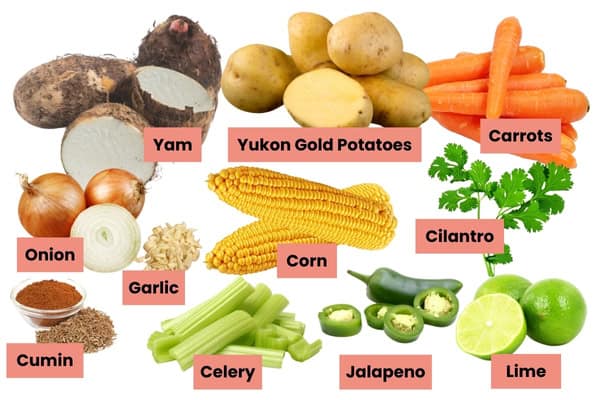
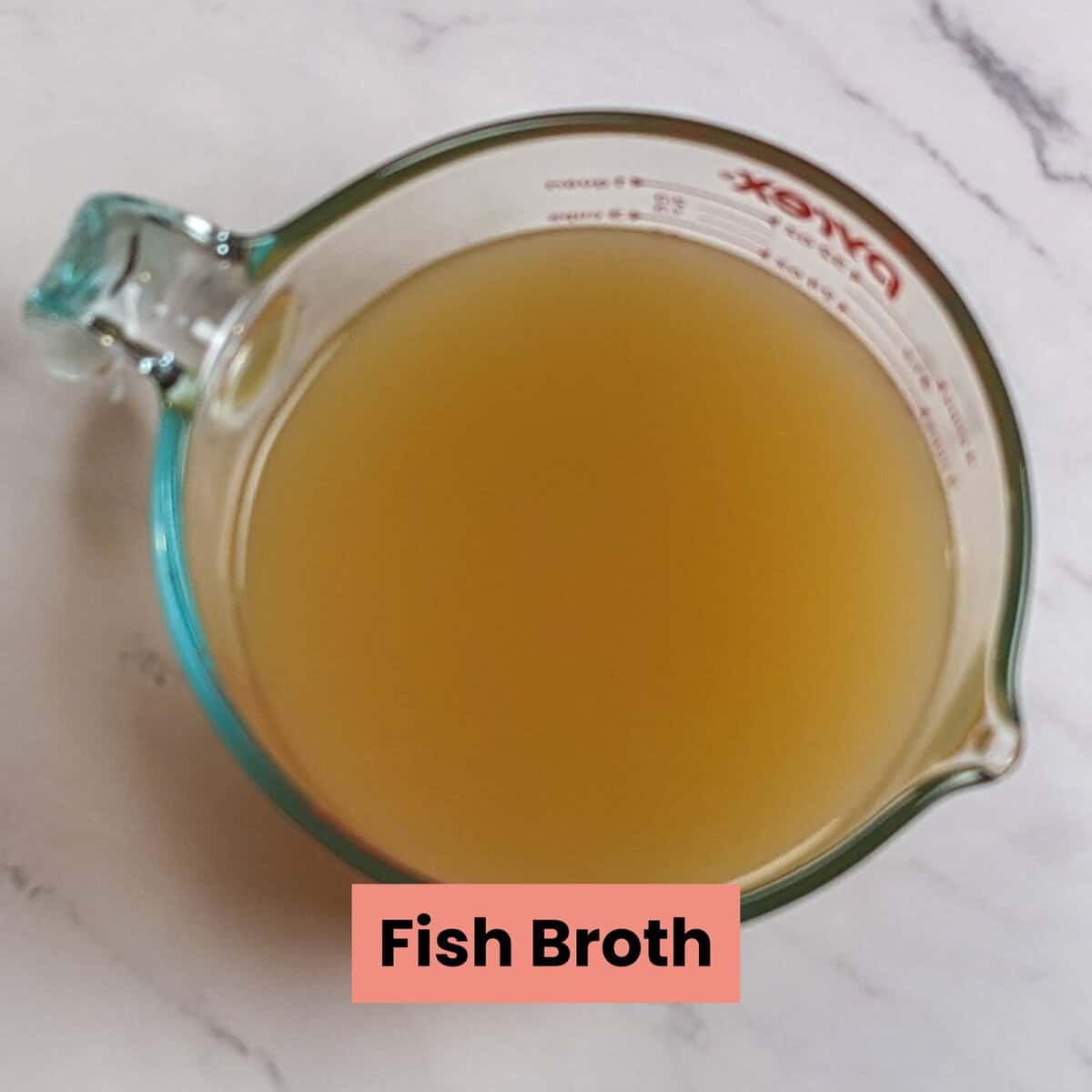
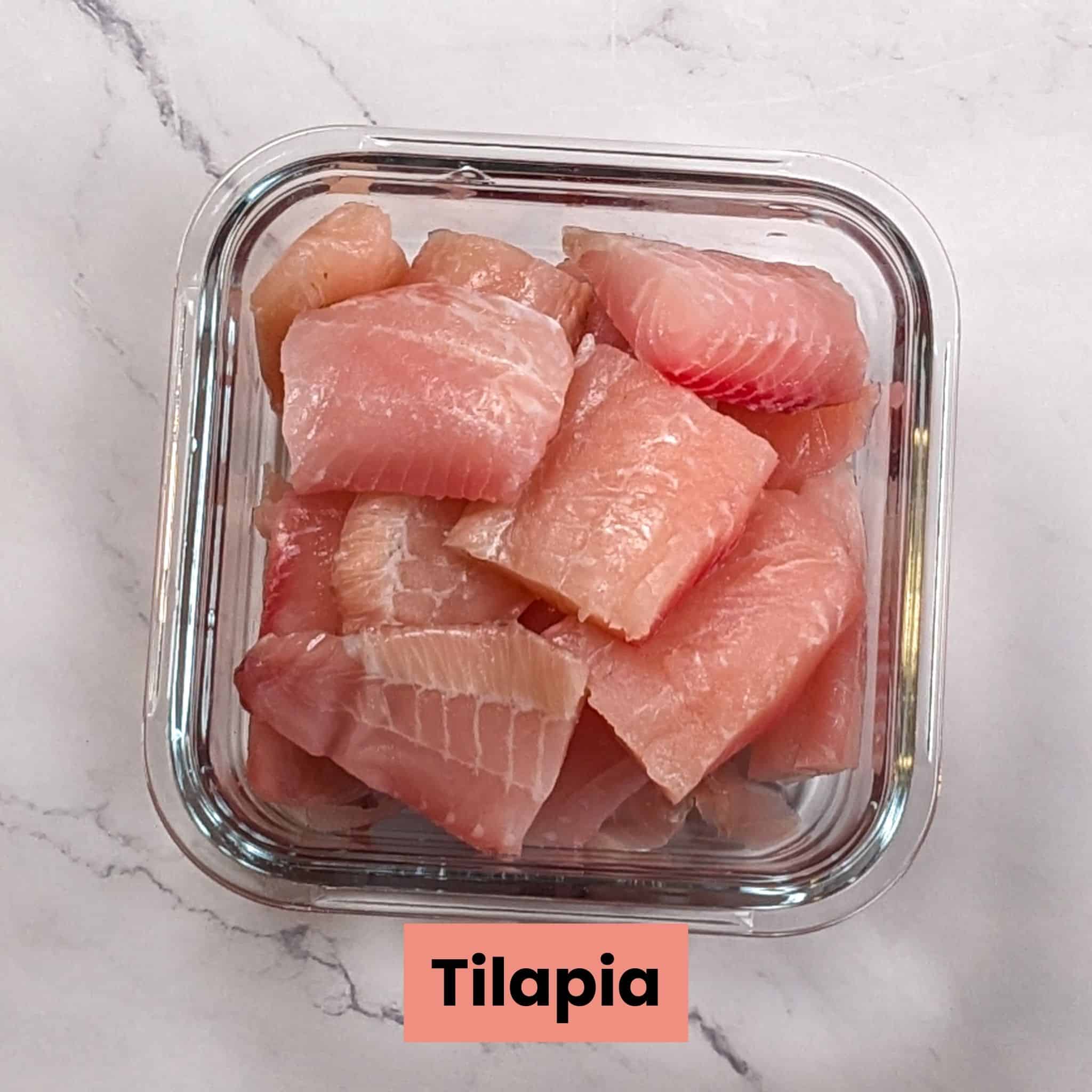
Culinary Glossary
This section provides concise definitions of key ingredients and techniques to enhance understanding and improve cooking skills related to this recipe.
Ingredients
- Yam: A starchy tuber commonly used in African, Caribbean, and Latin American cuisines and known for its firm texture.
- Tilapia (or White Fish Fillets): This is a common, mild-flavored freshwater fish that often has a firm texture and can hold its shape during cooking in this stew, just like grouper will if you decide to switch.
- Low-Sodium Broth: The broth you choose is very important. Taste it before adding it to make the soup base. You want it to be subtle and blend well with the ingredients it will meld with.
- Jalapeño: A medium-spicy chili pepper that adds heat and a slightly sweet, grassy flavor to dishes. For a traditional spicy profile, use a scotch bonnet pepper.
- Cilantro: This will give the soup a fresh, bright, earthy, citrus-like note to the soup's broth.
- Cumin: This spice provides a warm, earthy taste profile.
- Lime Juice: Fresh juice from limes adds acidity and brightness, balancing the flavors.
- Celery: A crunchy vegetable with a mild, slightly peppery flavor that is considered part of aromatics, which are vegetables added to boost the broth's flavor.
- Carrots: This root vegetable will add natural sweetness, texture, and color to the soup.
- Corn Kernels: Sweet, juicy seeds from corn cobs that add a pop of sweetness and texture to the soups.
Techniques
- Simmer: A cooking method where the liquid is heated just below boiling, allowing flavors to meld together without overcooking delicate ingredients.
- Herb Paste: A blended mixture of herbs, spices, and aromatics infuses dishes with concentrated flavor.
- Fork-Tender: A term used to describe food that is soft enough to be pierced easily with a fork, indicating it is properly cooked.
- Resting Time: After cooking, the soup sits off the heat, allowing flavors to settle and ingredients to absorb the broth fully.
- Garnish: A finishing touch added to a dish for visual appeal and extra flavor, such as fresh cilantro.

See the recipe card for quantities below.
Substitutions
Dairy Free
- Yay! This soup is already dairy-free.
Gluten-Free
- Bonus! This fish yam pepper soup is also gluten-free.
Vegetarian
- White Fish: Replace the fish with hearty vegetables like mushrooms, zucchini, canned chickpeas, white beans, or tofu for protein and texture. Use vegetable broth instead of fish broth to maintain a rich, flavorful base.
Convenience
- Yam: Substitute with sweet potatoes or regular russet potatoes.
- Low-Sodium Vegetable/Fish Broth: Replace with chicken broth or a bouillon/seasoning cube dissolved in water.
- Fresh Corn Kernels: Use canned or frozen corn.
- Lime Juice: Substitute with fresh or bottled lemon juice.
- Cilantro: Use parsley if cilantro isn't available.
- Olive Oil: Swap with vegetable or avocado oil or butter.
- Cumin: Use chili powder or taco seasoning for a similar earthy flavor.
- Celery: Replace with extra carrots or bell peppers.
- Onion: Use spring onions or even while or red onions.
- Jalapeño: Swap with red pepper flakes, scotch bonnet, or a pinch of cayenne pepper to match your heat preferences.

Get creative, and use a pepper soup spice mix. Try this Pepper Soup Spice Recipe by Low Carb Africa.
Chili Pepper Substitutions
Here are a few complementary peppers for the Fish Pepper Stew recipe, in order from mild to hot.
- Green Anaheim - New Mexican, should be roasted and peeled before use, giving a smoky characteristic. It has heat, but is milder than poblanos, but not as hot as serranos. Tricky: When you find a hot one, they can be hotter than poblanos. So much fun! Sigh.
- Poblano - ancho is bigger but not as hot, milder, with a great flavor
- (Jalapenos)
- Serrano - hotter than jalapenos and smaller in size
- Habanero - a super hot chili with a distinctive flavor; I would combine this with poblano peppers. *Habenero peppers might change the taste of this recipe a little, so only use them if you are used to eating this pepper and know the flavor outcome.
Change Heat Level - Modify the tilapia fish pepper soup recipe's heat level to your liking and learn more about the Scoville Scale and Chili Pairings.
Variations
- Fish Pepper Soup: As mentioned above, use your favorite fish; try my favorite Grouper or Snapper. Heck, make catfish pepper soup.
- Chicken Pepper Soup: Replace the fish broth with low-sodium chicken broth. Add an 8 to 10-ounce chicken breast with the tubers and simmer until cooked with an internal temperature of 165 degrees Fahrenheit. Then, remove the chicken and let it rest for 5 minutes. Then shred. Add back to the soup when you add the blended herb mixture.
- Kid-friendly: keep an eye on the chili pepper amount - serve based on your family's heat tolerance.
Equipment
- Large Dutch Oven: The Dutch oven is used to simmer the yams, potatoes, vegetables, and fish in broth, ensuring even heat distribution and retaining moisture during cooking. A large, heavy-bottomed stockpot with a tight-fitting lid can be used as a substitute.
- Food Processor: The food processor blends the olive oil, onion, jalapeño, garlic, cilantro, cumin, and lime juice into a smooth, flavorful herb paste. A blender can be used if a food processor isn't available. For a manual approach, finely chop the ingredients with a sharp knife and mash them together with a mortar and pestle.
- Sharp Chef's Knife: The Chef's knife is essential for chopping vegetables, dicing yams and potatoes, and portioning the fish fillets into chunks. A utility knife can work for smaller tasks, but precision and ease might be compromised.
- Cutting Board: Provides a stable surface for safely cutting vegetables, fish, and herbs.
- Ladle: The ladle is used to stir the stew gently and serve portions into bowls without breaking delicate fish pieces. A large serving spoon can substitute for ladling.
- Tongs: Tongs are helpful for carefully placing fish chunks into the stew and gently adjusting them during cooking. A slotted spoon or even clean hands can be used cautiously.
- Wooden Spoon: Used for stirring ingredients without scratching the Dutch oven's surface. A silicone or plastic spoon can also be used.
Kitchen Must-Haves - Find other tools I use here.
My Review: For 125 years, Lodge Cast Iron has been a family-owned company located in South Pittsburg, Tennessee. Their cookware, known for its dependability, is made of rugged, seasoned cast iron for excellent heat retention and durability. This is still my go-to Dutch oven. You'll find it in a lot of my recent videos. It's heavy, durable, non-stick, and it holds heat well. Also, a big lesson: never preheat an enameled Dutch oven without oil. This will crack the enamel. I learned this the hard way.
Storage
- Refrigerator: Allow the stew to cool to room temperature before transferring it to an airtight container. Store in the refrigerator for up to 3 days.
- Freezer: Let the stew cool completely, then portion it into freezer-safe containers or resealable freezer bags. Label with the date and freeze for up to 2 months. Tip: Avoid freezing the stew with fish already added, as fish can become mushy when thawed. Instead, freeze the broth and vegetables, and add fresh fish when reheating.
- Reheating: From the Refrigerator: Transfer the stew to a pot and reheat over medium heat, stirring occasionally until fully warmed through.
- From the Freezer: Thaw overnight in the refrigerator, then reheat in a pot over medium heat. Add fresh fish chunks during reheating for the best texture.
- Microwave (Quick Method): Reheat individual portions in a microwave-safe bowl, covered, in 1-minute intervals, stirring between each until hot.
Fish Stew Cooking Tips
- Cut Ingredients Uniformly: Dice the yams, potatoes, and vegetables into even-sized pieces to ensure they cook evenly and finish at the same time.
- Don't Overcook the Fish: Add the fish toward the end of cooking and simmer gently for just a few minutes to keep it tender and prevent it from falling apart.
- Blend the Herb Paste Smoothly: Make sure the herb paste is well-blended for even distribution of flavors throughout the stew. Scrape down the sides of the food processor as needed.
- Layer Ingredients by Cooking Time: Start with the tubers, add firmer vegetables like carrots and celery next, and finish with the fish and herb paste to prevent overcooking.
- Let the Stew Rest Before Serving: Allow the stew to sit for a couple of minutes off the heat before serving. This helps the flavors meld together for a richer taste.
Your Cooking Tips Resource Guide - Become a better home cook with tips to help you cook more efficiently on the Cook's Notebook tab.
How to Clean and Fillet a Whole Tilapia Fish
Follow the step-by-step instructions below to clean and prep a whole fish for this recipe.
- Rinse the Fish: Rinse the whole tilapia under cold water to remove any surface debris.
- Remove the Scales: Using a fish scaler or the back of a knife, scrape against the scales from tail to head until the skin is smooth. Rinse again.
- Gut the Fish: Make a shallow cut along the belly from the tail to the head. Remove the internal organs, rinse out the cavity, and pat the fish dry with paper towels.
- Remove the Head (Optional): Use a sharp knife to cut behind the gills and through the spine if you prefer headless fillets.
- Make the First Fillet Cut: Place the fish flat, make an incision behind the gill plate, and run the knife along the backbone, gliding it toward the tail.
- Separate the Fillet: Gently lift and cut the fillet away from the rib bones, keeping the knife close to the bones to minimize waste.
- Repeat on the Other Side: Flip the fish over and repeat the same process on the second side.
- Remove the Skin (Optional): Place the fillet skin-side down, grip the tail end, and run the knife between the skin and flesh while holding it taut.
- Trim and Rinse: Remove any remaining bones or dark bloodlines, rinse lightly, and pat dry.
Frequently Asked Questions
Yes, you can use frozen fish fillets, but make sure they are fully thawed and patted dry with paper towels before adding them to the stew. This prevents excess water from diluting the broth and ensures the fish cooks evenly.
The yellow and white yam is native to Africa. This tuber mostly comes in a cylinder shape with rough, brown, and stringy skin. The interior can also be white or yellow, with slightly different tastes.
You will mostly find this tuber in the West Indies, Caribbean, Latin, or African markets. You might also be lucky to find it at a big chain supermarket.
When selecting the yam, pick one free of rotten spots and firm to the touch with no flesh cracks. In addition, if the yam is already presented cut (some stores will cut it into 6-inch pieces), be sure not to buy the end pieces, which may be more bitter.
Uncut yams can be stored in a cool, dry place for a long. Refrigerating yam can cause changes to the starch, which will eventually change the taste and is not recommended. Use a sharp knife, not a peeler, since the skin is thick. Also, oxidation may occur within a few minutes of being cut, just like a potato.
Firm white fish like tilapia, snapper, grouper, or cod are ideal because they hold their shape during cooking and absorb flavors well. Avoid overly delicate fish that might fall apart in the broth.
To reduce the heat, use half a jalapeño or remove the seeds. For extra spice, add a Scotch bonnet pepper or a pinch of cayenne pepper while blending the herb paste.
This stew is hearty but pairs beautifully with sliced avocado, crusty bread, white rice, or steamed vegetables for a more filling meal.
Seafood Recipes
Looking for seafood recipes like this? Try these:
- Creamy Haitian-Style Shrimp Mac and Cheese with Gouda Cheese
- Air Fryer Jerk Shrimp Fajitas | Easy Caribbean in 20 Minutes
- 20 Irresistible Fish Recipes
- Healthy Haitian-Style Creole Spicy Shrimp Pasta
African Recipes
Looking for African-Inspired recipes like this? Try these:
- How to Make Ata Gige Paste - A Nigerian Aromatic Base for Cooking
- Spicy Zhug Chicken Pita Sandwich with Spinach Date Salad
- Spicy Falafel Pita Sandwich & Lemon Tahini Dressing
- Quick and Easy Lean Baharat Spiced Bean and Lamb Stew
📖 Recipe
Fish Pepper Yam Stew | Tilapia, Potatoes, and Corn
Ingredients
For the Tubers
- 1 small yam cut into chunks
- 1 medium Yukon gold cut into chunks
- 4 cups low-sodium vegetable or fish broth
- salt and pepper v
For the Herb Paste
- 1 tablespoon olive oil
- 1 small onion diced
- 1 medium jalapeno diced
- 3 cloves garlic
- 1 bunch cilantro
- ½ tablespoon ground cumin
- 1 lime juiced
For the Vegetables
- 1 stalk celery small diced
- 2 small carrots peeled and small diced
- 1 cup fresh corn kernels
To finish the Soup
- 12 ounces white fish fillets snapper, grouper, tilapia, or cod, 2-inch chunks
Equipment
Instructions
- Save Time in the Kitchen: Read the instructions thoroughly, then gather and prep all your ingredients before cooking! Learn Prepping Tips.
- Cook the Tubers: In a large Dutch oven, combine the yam, potatoes, and broth. Season with kosher salt and ground black pepper to build the base flavors. Place the pot over medium-high heat and bring the broth to a gentle simmer. Allow the tubers to cook for about 15 minutes . At this point, they should be partially tender- you'll notice some resistance when pierced with a fork, but it should slide through more easily than when raw.
- Make the Herb Paste: While the tubers are simmering, prepare the herb paste. In a food processor, combine olive oil, onion, jalapeño, garlic, cilantro, cumin, and lime juice. Blend until you have a smooth, fragrant paste. This mixture will infuse the stew with vibrant flavor and aroma. Once blended, set the herb paste aside and prepare to incorporate it later in the recipe.
- Add Vegetables: After the tubers have cooked for about 15 minutes, stir in the diced celery, carrots, and fresh corn kernels. These vegetables add texture, sweetness, and an extra layer of flavor to the stew. Let them cook together with the yam and potatoes for about 5-8 minutes or until the carrots are tender when pierced with a fork.
- Add Fish and Herb Paste: Once the vegetables have softened, gently add the white fish chunks and the prepared herb paste to the pot. Carefully stir everything together, being mindful not to break apart the delicate fish pieces. The herb paste will blend with the broth, creating a rich and aromatic base that complements the fish beautifully.
- Final Cook and Serve: Let the stew simmer for about 5 minutes or until the fish is fully cooked and firm to the touch. You can test doneness by lightly pressing on a piece of fish-it should feel firm but not rubbery. Remove the pot from the heat and let it rest for about 2 minutes to allow the flavors to settle. Serve warm in bowls, and if desired, garnish with a sprinkle of fresh cilantro for an extra burst of freshness.
Notes
- Adjust spice levels: Add more jalapeño or a Scotch bonnet pepper for extra heat.
- Serving suggestion: Enjoy with warm bread, sliced avocado, or rice to soak up the flavorful broth. Safety First
- Use gloves and/or wash hands thoroughly afterward, and with all equipment that touches the hot pepper, do not touch your eyes. For a Hotter Kick
- Replace the jalapeno peppers or scotch bonnet for more heat.
Nutrition
Subscribe to My YouTube Channel
SUBSCRIBE: 👈To my YouTube Channel to Get Notifications of New Videos.
Have a Comment or Question?
If you have a question or comment about this fish pepper stew recipe, please post it below. You will definitely get a quick response. It also helps our other readers to stay informed. Thanks!



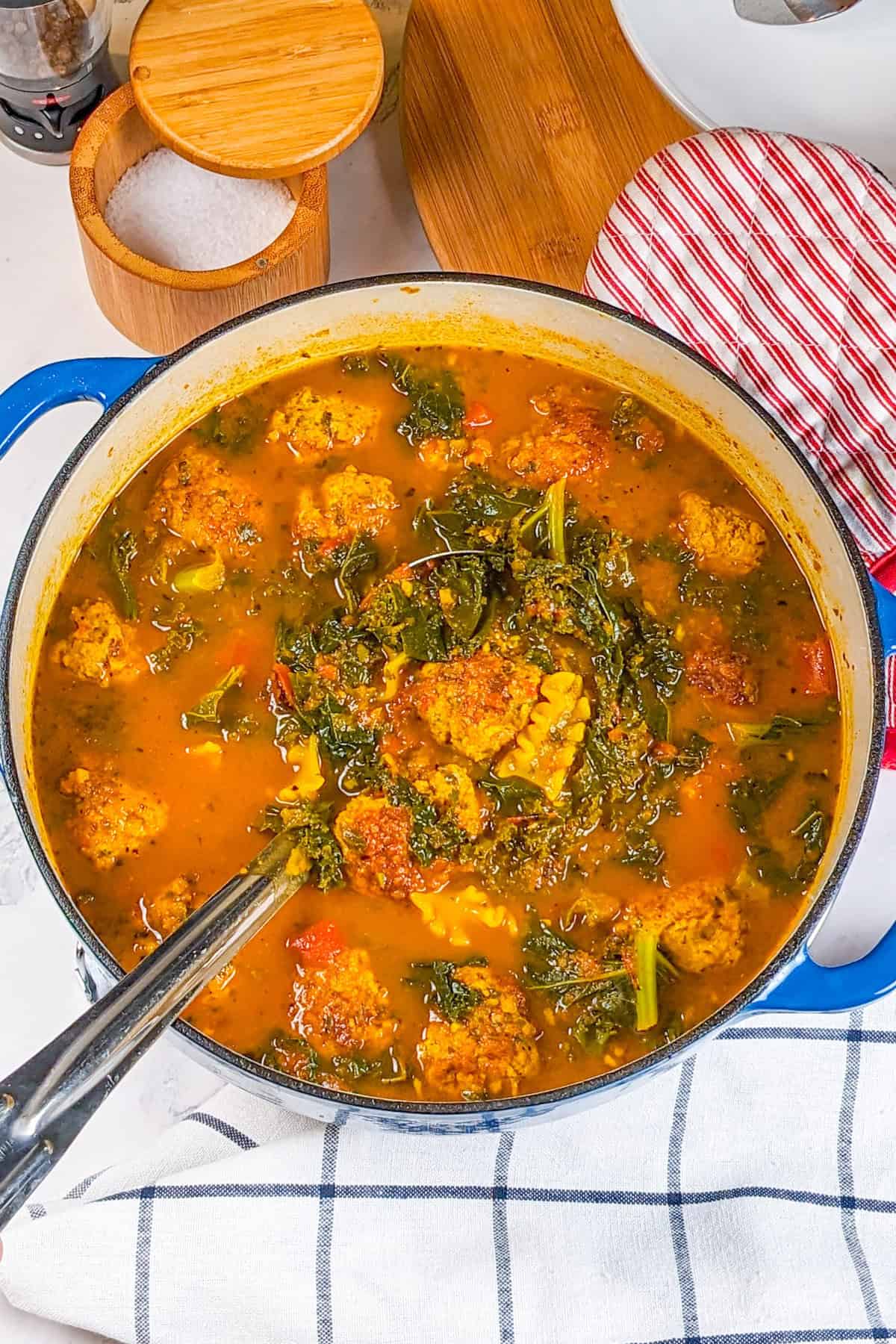
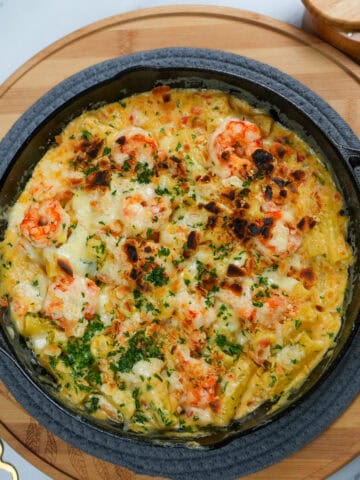
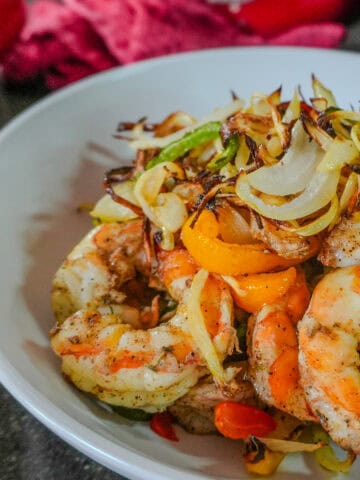
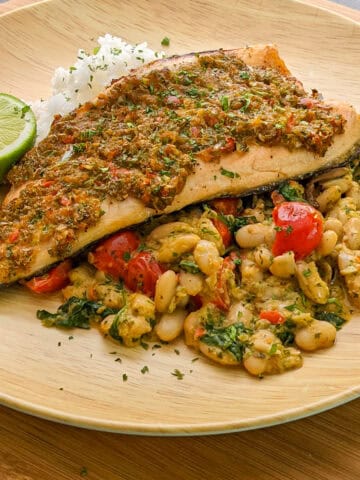
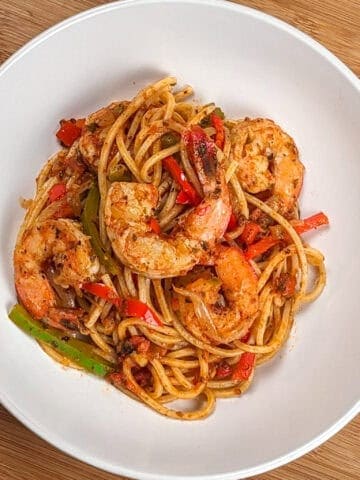
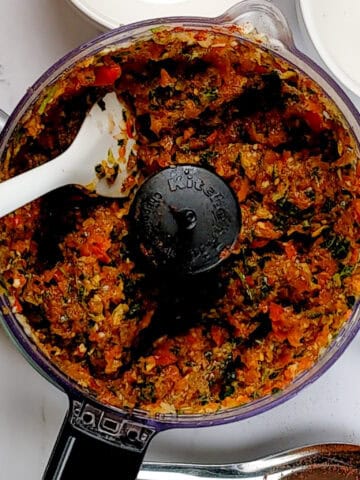

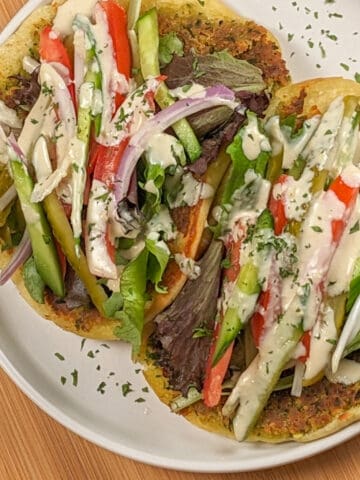
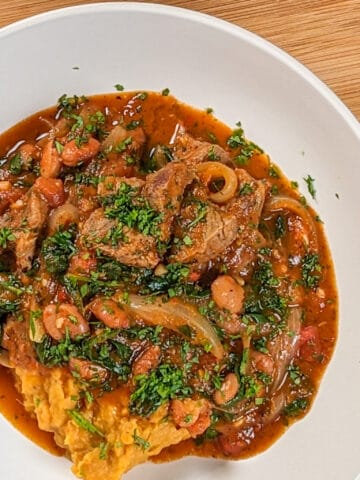
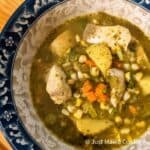

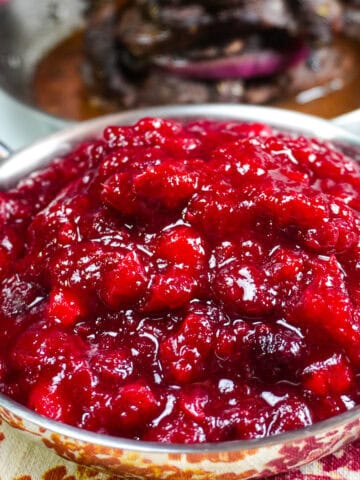
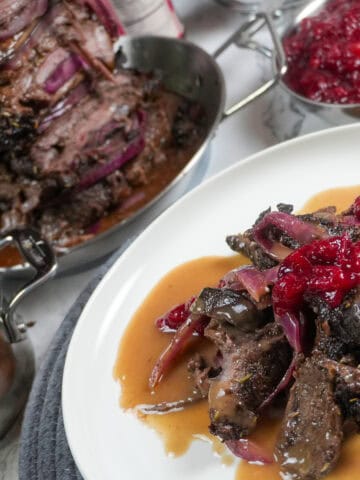

Leave a Reply